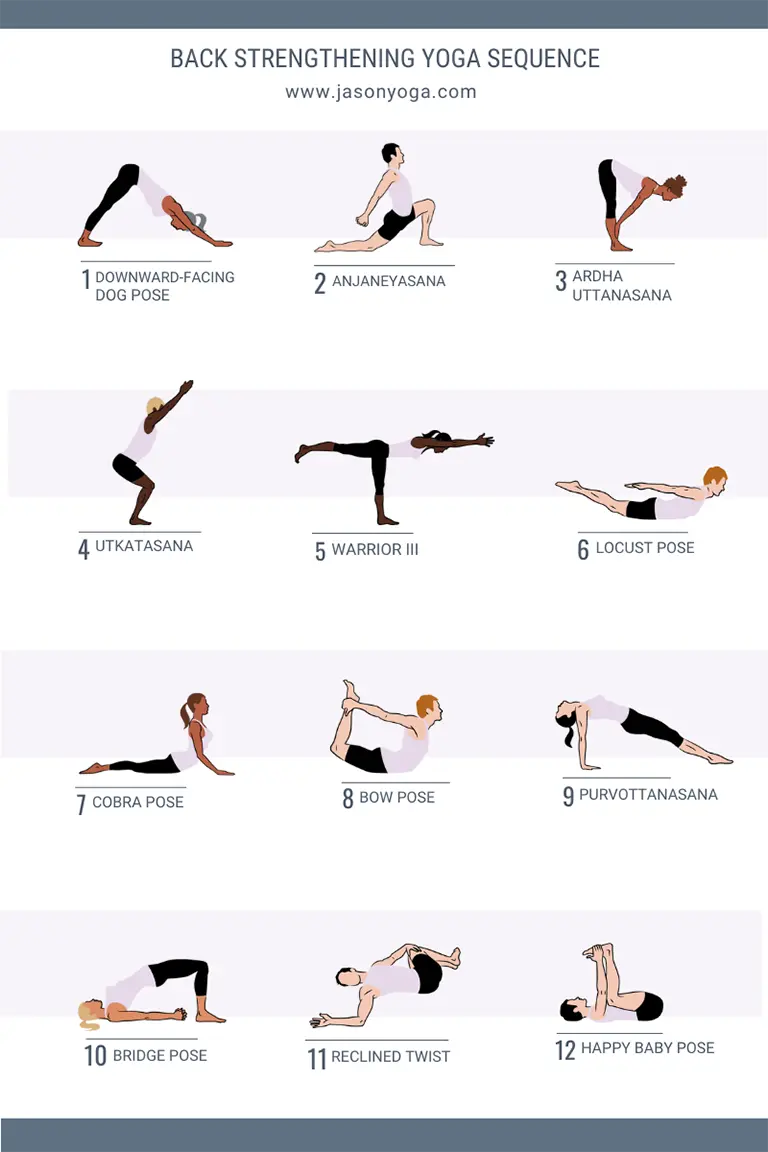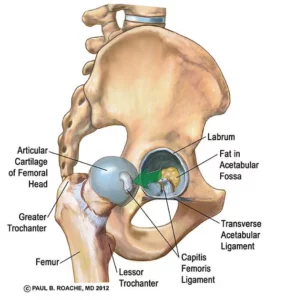This sequence of 12 poses is great for increasing strength along the whole posterior chain of the body — another way of saying this is that these yoga poses build back strength. (To go straight to the video breakdown, click here.)
How to use this Yoga for Lower Back Sequence
There are three different ways that you can use this sequence:
- Practice or teach this sequence for a 15-20 minute practice from start to finish
- Use this sequence as a starting place for a longer sequence. So, you can use some of the central tenets and central ideas and spin it into a bigger sequence.
- Take some of the poses in the sequence and sprinkle them through a sequence for your own students.
Sequence Breakdown
The sequence begins with Downward-Facing Dog, to help warm up the whole body.
Lengthen your arms, reach through your shoulders, and elongate your torso. You’ll start to warm up the leg and engage the hip flexors. Down Dog is really just a simple preparation. And then we really start to focus on strengthening the back body in the next several poses.
After Down Dog, come into a Low Lunge, or Anjaneyasana. So, what you want to do in this pose is to interlace the fingers behind you. If you can’t interlace, you could rotate the arms so the palms face forward. Be sure to engage all of your spinal muscles and pull the spine into a very gentle backbend. Remember, this is the first spinal extension or backbend or back body strengthener you’re doing in this sequence, so be really moderate. You’re just starting to warm these tissues up.
Next, you have three poses in a row that are standing poses that are going to really dial us into this posterior strength. It starts with Halfway Lift or Ardha Uttanasana. Oftentimes when I watch students, they don’t come high enough to really lengthen, strengthen, and engage the whole posterior sheath of the spine. So what I want to encourage you when you’re working with the intention of strengthening the back body is take the hands all the way to the shins. By doing so, you will engage the lower back, the middle back, and the upper back.
Next is Chair Pose or Utkatasana. When we’re looking to strengthen the back body in Utkatasana, we want the lower back, mid back, and upper back to be in gentle extension. Think about Utkatasana as being similar to Locust Pose in the quality of spinal engagement.
Finally, Virabhadrasana III. Now there’s a lot of things going on in Virabhadrasana III, but in Virabhadrasana III, I want you to really lift a lot, OK? I don’t want the spine to just be kind of draped over that standing leg. I want you to feel like you can really lift and engage the spinal muscles.
After the standing poses, you’ll transition to the floor for three face-down backbends — Locust, Cobra, and Bow. Remember when you focus on these face down backbends you’re not looking for a big range of motion, you’re looking for good cohesive strengthening of that whole back body.
Now our final two poses also really emphasize back body strength: We have Purvottanasana, also known as Tabletop.
And if this pose is really hard for you or your students, you can bend the knees and step the feet in, so it’s more of a tabletop.
The last back strengthener is Bridge Pose. Although, to be honest with you, Bridge requires the least back body strength compared to the previous poses.
But it’s still such a good pose to bring tone to that backside and there’s one simple thing that you can do for yourself or your students to make it even more strength-oriented: You can raise one leg towards the ceiling or towards the front of the room.
You will finish the sequence with a little bit of lengthening. Lie on your back, pause for a moment. And then take a nice, simple Reclined Twist to lengthen out all of that spinal engagement that we have facilitated.
Lastly, you’ll do Happy Baby Pose, which will gently lengthen out some of the muscles you’ve been contracting. Also, by holding the feet in Happy Baby Pose, you’re also going to get a little bit of length in the hamstrings and also the adductors, just to help round out the sequence.
And that’s it!
Remember, you can do this practice straight up, for a 15 – 25 minute sequence. Those of you that want a longer practice or who are teachers, use this as inspiration to find more poses that strengthen the back body. Sometimes as yoga teachers and practitioners, we just need that.
Last thing! If you’d like to learn more about sequencing, I have a great sequencing training that you can learn all about here: Mastering the Art of Yoga Sequencing
Watch the video and get Jason’s recommendations for each pose in the sequence
Sign up to join our newsletter below, and we’ll also send you a free PDF download of the sequence.



